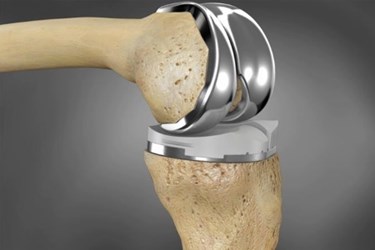Using Nanoparticles To Increase Orthopedic Biocompatibility
By Chuck Seegert, Ph.D.

In an effort to improve the compatibility of metal structures with bone, a team from the Research Center for Advanced Materials (Cimav) in Mexico is turning to nanotechnology. An in-depth study of the chemical composition and nanostructure of bone tissue is being paired with novel material fabrication to help provide Mexico with a domestically manufactured, cutting-edge technology.
Most orthopedic implants used in Mexico are manufactured abroad. One of the main goals at Cimav is to conduct research and then apply the newly developed knowledge to biomedical implant technologies. Once developed, these technologies could then be manufactured in Mexico. While contributing to the field of orthopedic design in general, the Cimav team aims to reduce Mexico’s dependence on international implant supplies by developing internal competency.
In their orthopedic research efforts, the team of materials scientists at Cimav study ceramic coating systems that are based on hydroxyapatite, according to a recent press release from Investigación y Desarrollo. While hydroxyapatite isn’t a new material, the team has introduced novel approaches to reinforce the ceramic. Nanoparticles are added to the hydroxyapatite matrix, which increases the biocompatibility. Additionally, the nanoparticles improve the mechanical properties and the wear properties of the new composite.
The coating of the implants is only one focus for the team. For example, they attacked the design of knee implants with a three-pronged approach that includes the coating system mentioned above, research into polymeric materials for articular surfaces, and system-level biocompatibility for the whole device. Each of these areas is being researched separately.
“Each research is a graduate level thesis and participation of a multidisciplinary group of researchers that ultimately come together for the same product, a final component,” said Ana Maria Arizmendi Morquecho, a Cimav scholar, in the press release. “The next stage of the project is to validate in vitro and in vivo synthesized material at a laboratory level, for which the link with other entities such as medical schools and academic institutions specialized in this type of testing is necessary.”
To date, the team has published 10 papers in the literature related to their research. While Cimav has collaborated with institutions of higher education and other technology research centers, they have yet to begin interfacing with industry. Currently, they are seeking manufacturing partners that will allow them to begin making implants for the population of Mexico.
Other novel approaches to improving orthopedic bone regeneration are being developed, and some have an environmentally friendly twist. Recently, researchers discovered a way to create biocompatible materials from beer brewing waste products.
Image Credit: Investigación y Desarrollo
